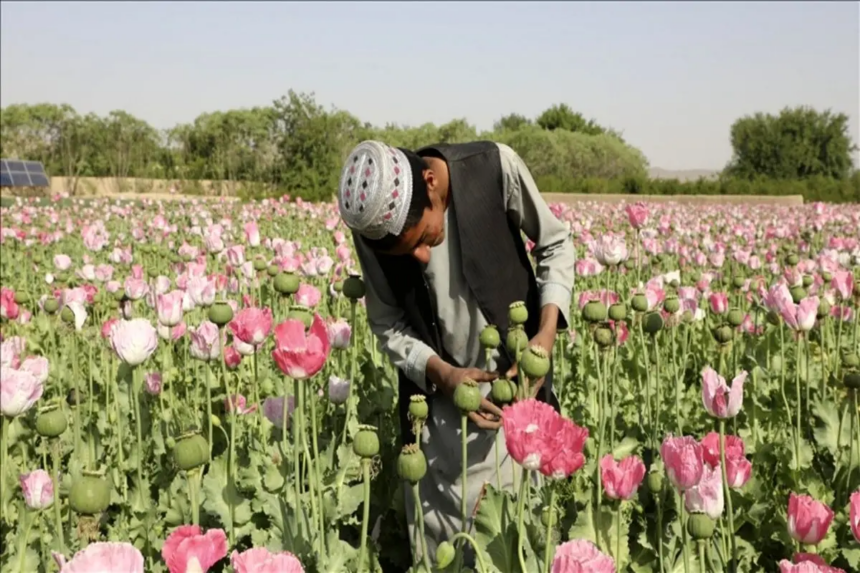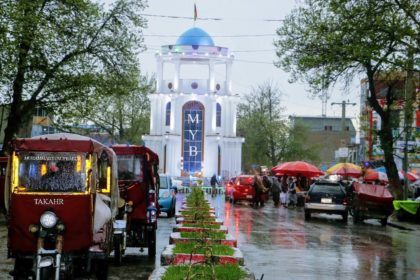RASC News Agency: For the first time, The Washington Post has revealed details of a covert, decade-long CIA operation aimed at undermining Afghanistan’s narcotics industry a campaign that unfolded quietly alongside the United States’ twenty-year military presence in the country.
According to the report, the clandestine initiative, launched in autumn 2004 and continuing until 2015, sought to reduce heroin production by targeting the poppy fields that sustained both the rural economy and the Taliban’s financial networks.
Under the program, British C-130 aircraft, operating under cover of darkness, reportedly dispersed billions of genetically modified poppy seeds across fields in southern and eastern Afghanistan. These seeds, carefully engineered to yield plants with negligible levels of morphine alkaloids the base compound for heroin were designed to neutralize opium production from within, without alerting farmers or the Taliban.
At least 14 anonymous intelligence and diplomatic sources confirmed the operation’s existence, though the precise details including the number of flights, funding scale, and field-level impact remain classified.
This secret program represents one of the least-known dimensions of the U.S. war in Afghanistan, a period when Washington sought not only to defeat the Taliban and other militant groups but also to prop up its fragile allied government in Kabul.
At the time, heroin trafficking had become both a symbol of endemic corruption within the Karzai administration and a vital source of revenue for the Taliban insurgency. Western counter-narcotics strategies varied wildly from aerial herbicide spraying to purchasing entire poppy harvests for medical use but the approaches were deeply divisive.
According to The Washington Post, the CIA’s bio-engineering project required a top-secret presidential authorization from George W. Bush, and even then-President Hamid Karzai was reportedly unaware of its existence during the early phase.
Former officials described the program as “technically ingenious but economically unsustainable.” It consumed a substantial portion of the CIA’s Counter-Narcotics and Crime Center budget and yielded only temporary disruptions to opium production. Ultimately, the initiative allowed policymakers in Washington to delay confronting the deeper policy failures of America’s so-called “war on drugs.”
U.S. agencies later debated more aggressive proposals, including Colombia-style aerial fumigation of poppy fields using glyphosate. However, the Pentagon, CIA, and the British government jointly opposed the plan, citing risks of public backlash, environmental contamination, and political blowback from a weak Afghanistani government already struggling for legitimacy.
One U.S. diplomat in Kabul, known mockingly as “Chemical Bill,” reportedly suggested publicly sitting in a barrel of glyphosate at the Ahmad Shah Massoud roundabout to prove its harmlessness a gesture that never materialized.
According to the Special Inspector General for Afghanistan Reconstruction (SIGAR), none of the anti-narcotics programs led by the U.S. or the Afghanistani government achieved any lasting reduction in poppy cultivation. Even after the CIA’s covert bio-agriculture effort ended, opium production rebounded sharply after 2016, coinciding with the Taliban’s territorial resurgence.
Experts say the failure reflected the deep entanglement of poppy farming with Afghanistan’s rural economy and culture, the disunity among U.S. agencies, and the ambivalence of the Karzai administration, which often shielded warlords and power brokers complicit in the drug trade.
While the CIA’s experiment faded into secrecy, the Taliban’s narcotics empire thrived. Over the years, poppy taxation and heroin exports became the group’s principal source of revenue, sustaining its insurgency and later consolidating its authoritarian rule after 2021.
Despite international sanctions and bans, the Taliban’s governance structure continues to rely on the same illicit networks that once fueled its war machine. Analysts argue that the failure of Western counter-narcotics policy not only exposed the limits of technological intervention but also enabled the Taliban to evolve into a financially self-sufficient regime under the cover of religious ideology.
The revelations underscore how America’s war on drugs in Afghanistan was fraught with contradictions a campaign that consumed billions of dollars, experimented with clandestine biotechnology, and left behind little but deeper dependency and disillusionment.
In the words of one former intelligence officer cited by The Washington Post:
“We tried to rewrite the biology of a country without understanding its people. The Taliban understood the poppy better than we ever understood Afghanistan.”






